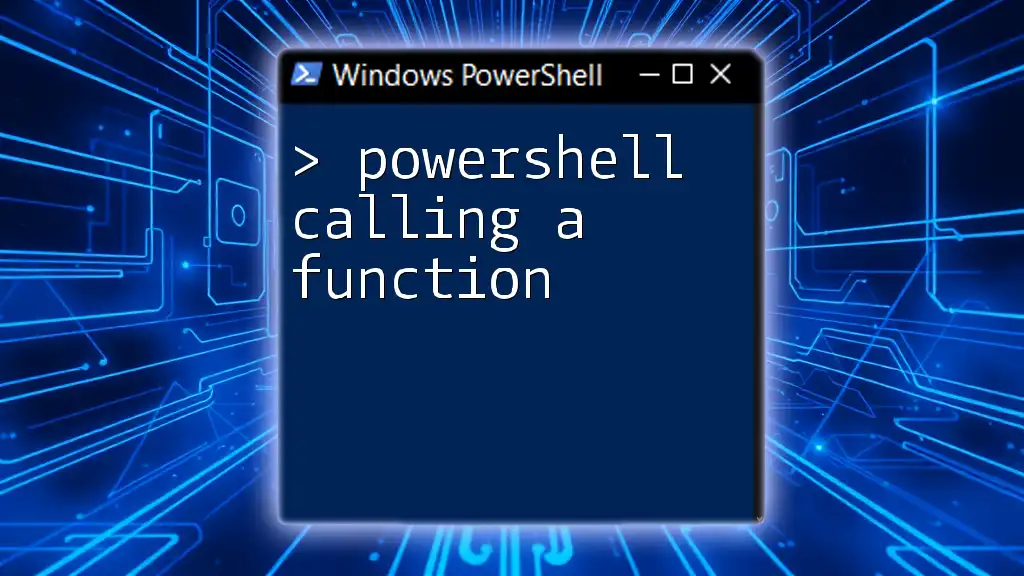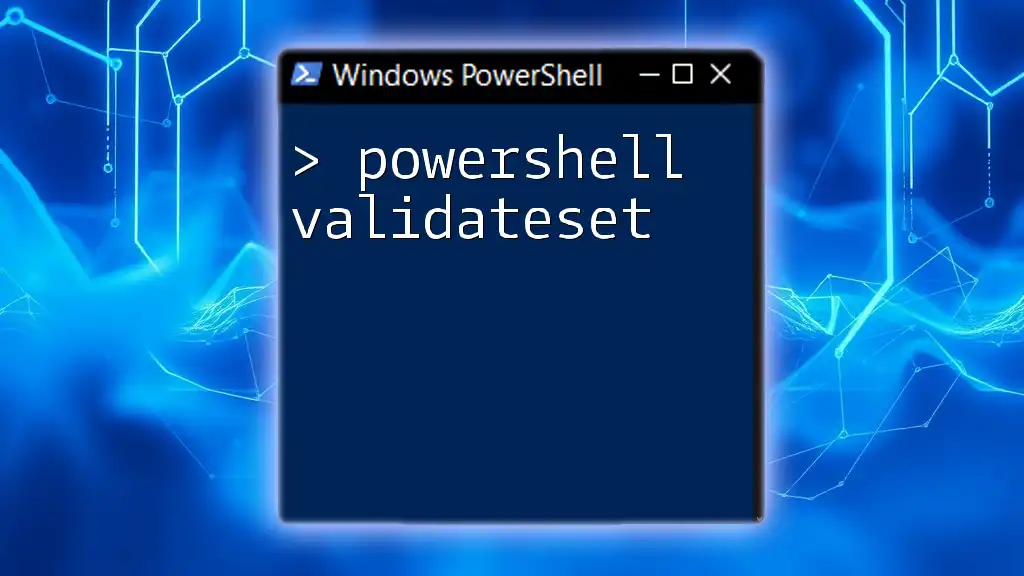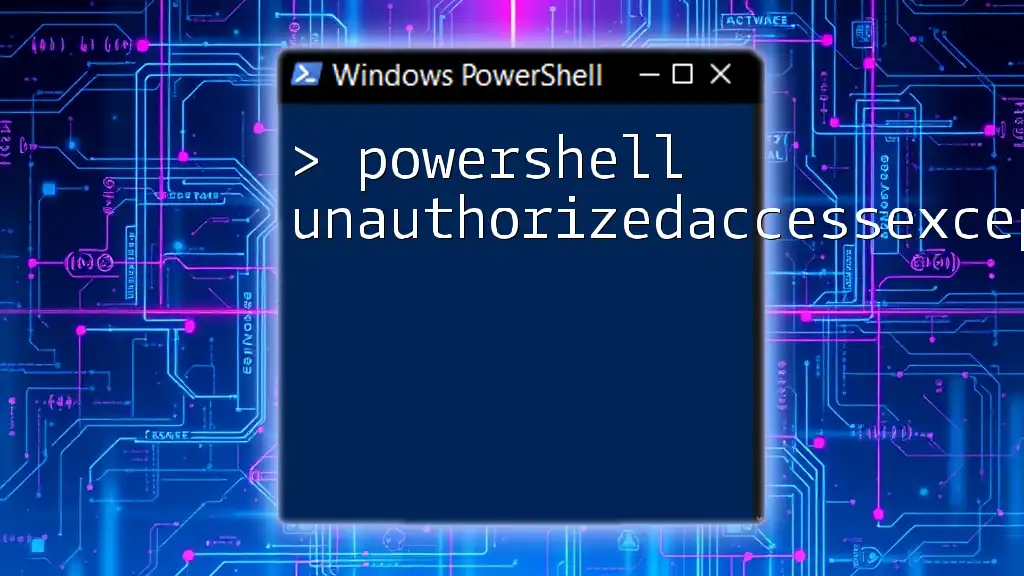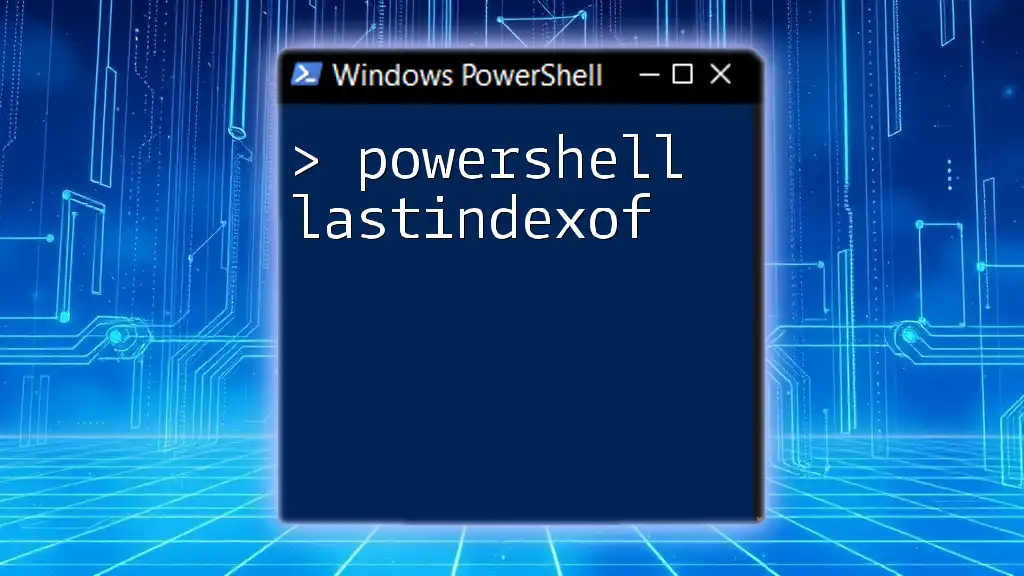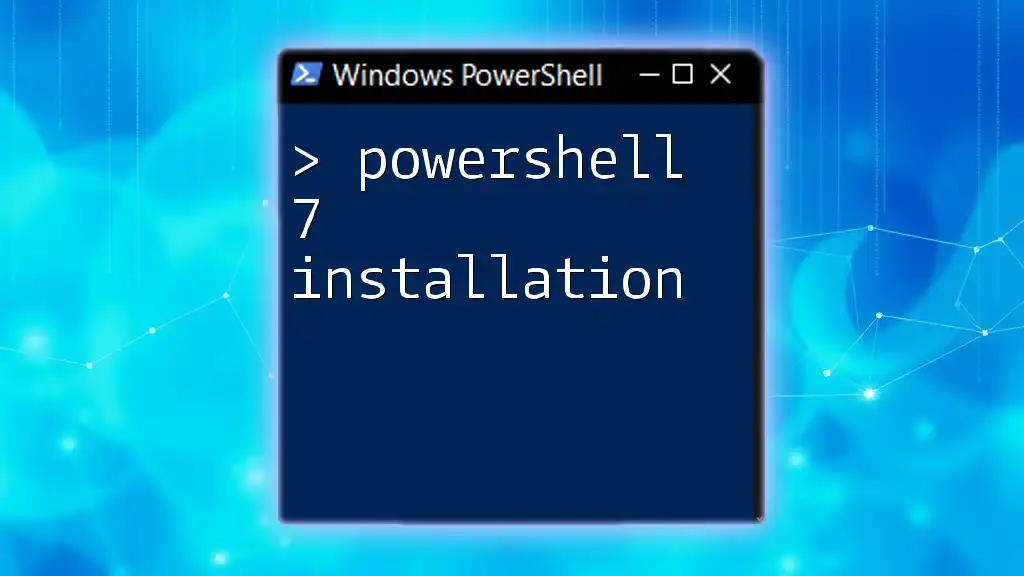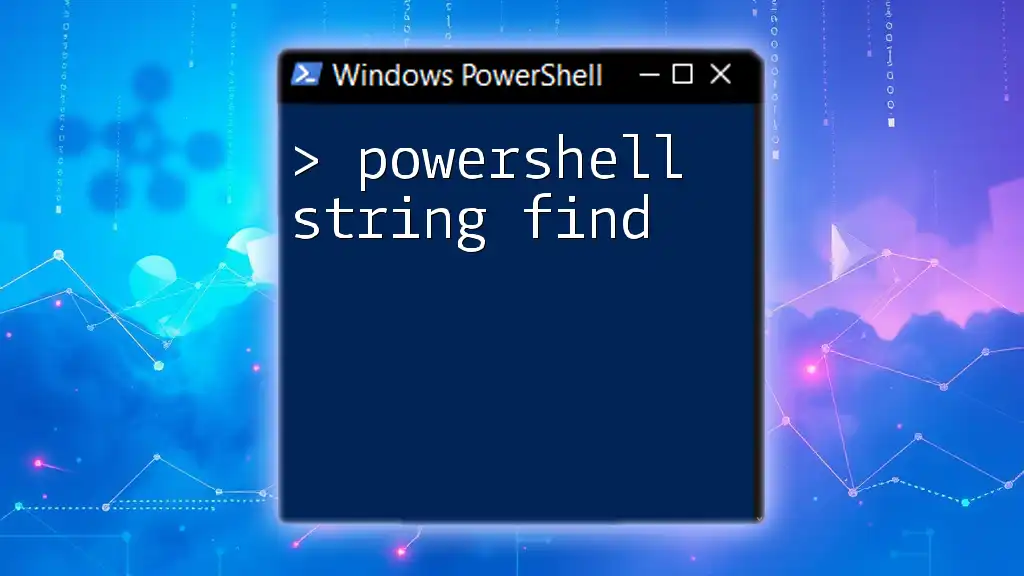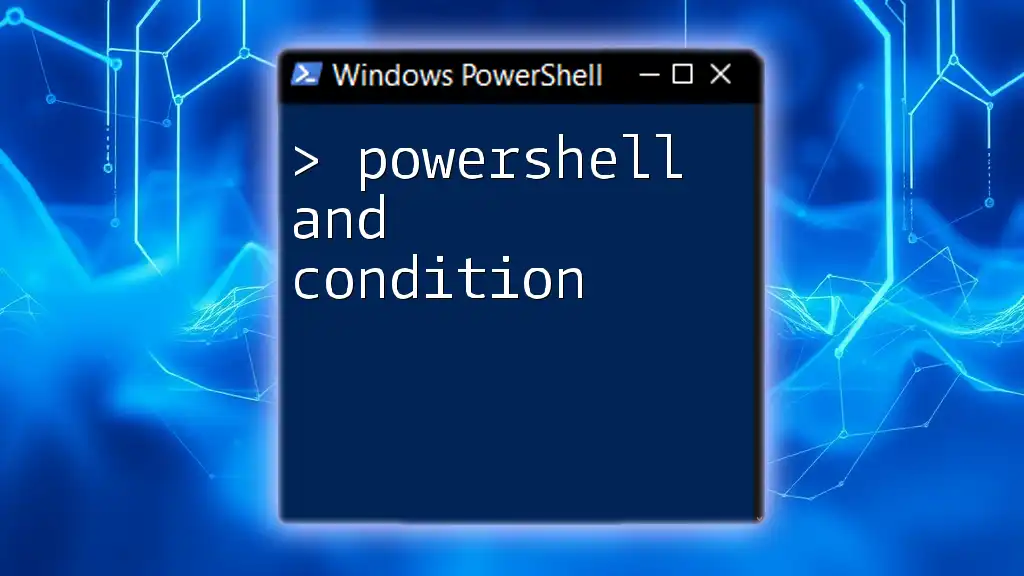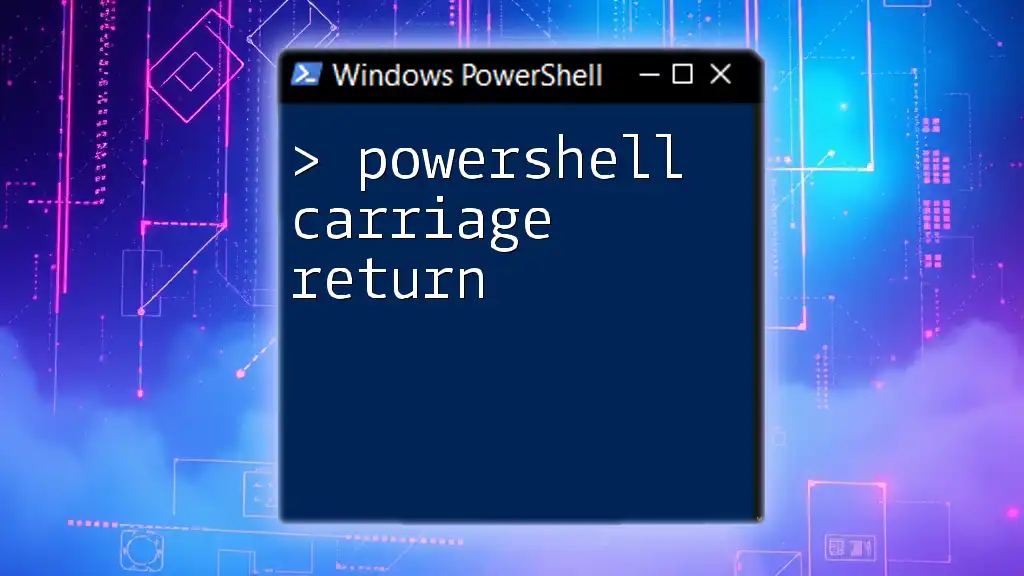In PowerShell, you can call a function by simply typing its name followed by any required parameters, allowing you to execute a predefined set of commands quickly.
function Say-Hello {
param ($Name)
Write-Host "Hello, $Name!"
}
Say-Hello -Name 'World'
Understanding PowerShell Functions
What is a Function in PowerShell?
A function in PowerShell is a reusable piece of code that can take input parameters, perform operations, and return values. Functions are ideal for encapsulating logic that needs to be reused throughout your scripts, promoting code reusability and organization.
Functions provide a foundation for modular programming, enabling you to divide complex tasks into simpler, manageable components. This modularity makes it easier to troubleshoot, maintain, and extend your scripts.
Structure of a PowerShell Function
The basic structure of a PowerShell function consists of three primary components:
- Function declaration: Defines the name of the function.
- Parameters: Defines input parameters and their types.
- Body: Contains the code logic to be executed.
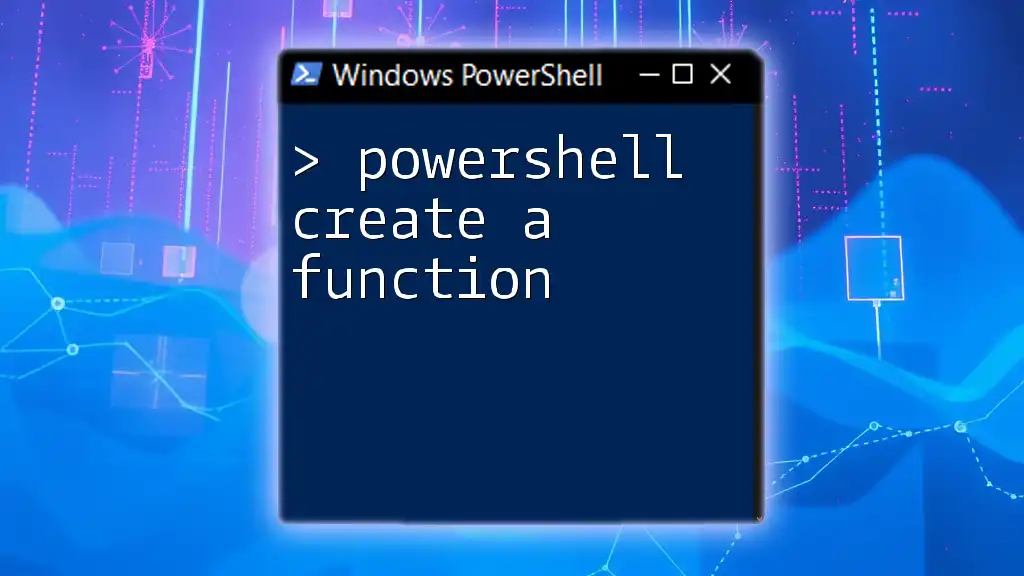
How to Define a Function in PowerShell
Syntax for Defining a Function
The syntax for defining a function in PowerShell is straightforward. Here’s the general format you will use:
function FunctionName {
param($Parameter1, $Parameter2)
# Function Body
}
Example of a simple function:
function Greet {
param($Name)
"Hello, $Name!"
}
This function, `Greet`, takes a single parameter, `$Name`, and outputs a greeting message.
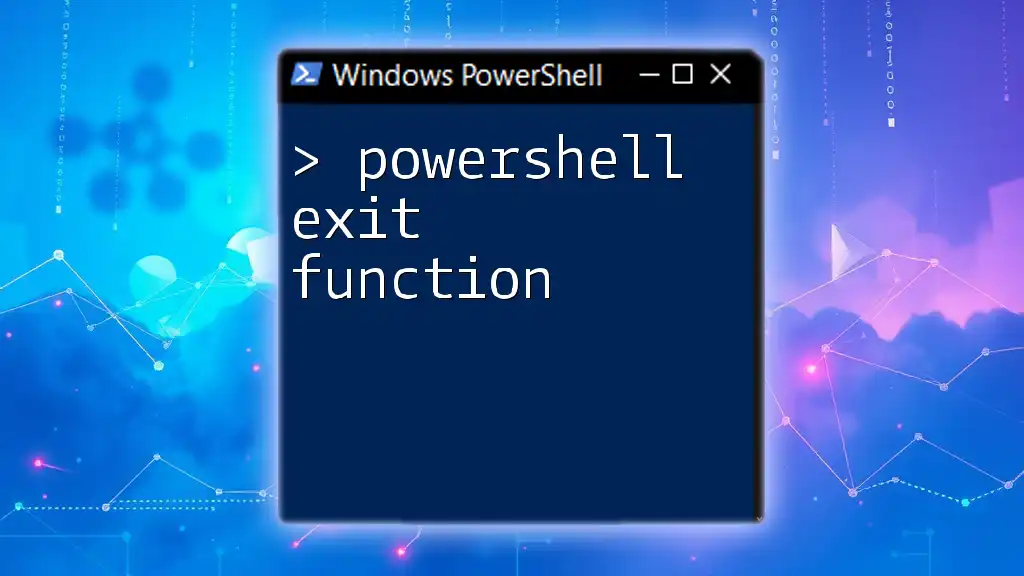
How to Call a Function in PowerShell
Calling a Simple Function
Calling a function in PowerShell is as simple as typing its name followed by any required parameters.
For example, to call the `Greet` function created earlier:
Greet -Name "John"
This will output: "Hello, John!". It demonstrates the direct call to a function with a parameter.
Using Parameters in Function Calls
Positional Parameters
PowerShell supports both positional and named parameters. Positional parameters are those that rely on the order of the arguments provided.
Consider this example of a function that performs addition:
function Add {
param($a, $b)
return $a + $b
}
Add 5 10
In this case, `5` is the first argument for `$a`, and `10` is the second for `$b`.
Named Parameters
Named parameters allow you to specify which parameter you are providing values for, making your code more readable.
For instance, you can call the `Add` function using named parameters as follows:
Add -a 5 -b 10
This achieves the same result while improving clarity.
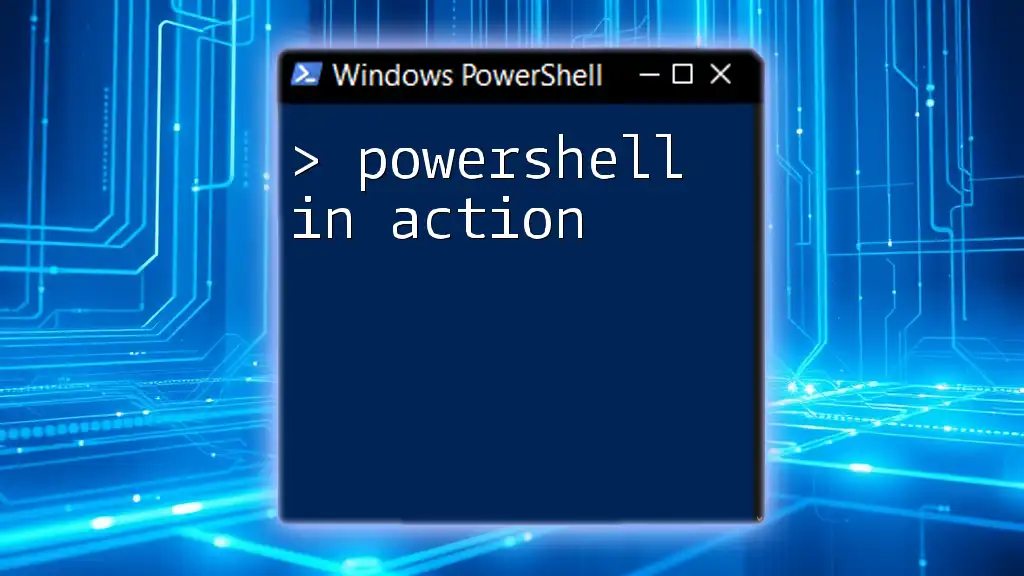
Calling Functions with Return Values
Storing Return Values
Functions can return values that you can capture and use later. After calling a function, you can store its output in a variable.
For example:
$sum = Add -a 5 -b 10
"The sum is $sum."
This code stores the sum result in the variable `$sum` and outputs: "The sum is 15."
Using Return Values in Expressions
Return values can be utilized in various expressions or calculations, broadening the overall functionality of your scripts.
Here's how you can use the return value in an expression:
$doubleSum = $sum * 2
Now, `$doubleSum` will hold the value 30, illustrating the versatility of function return values.
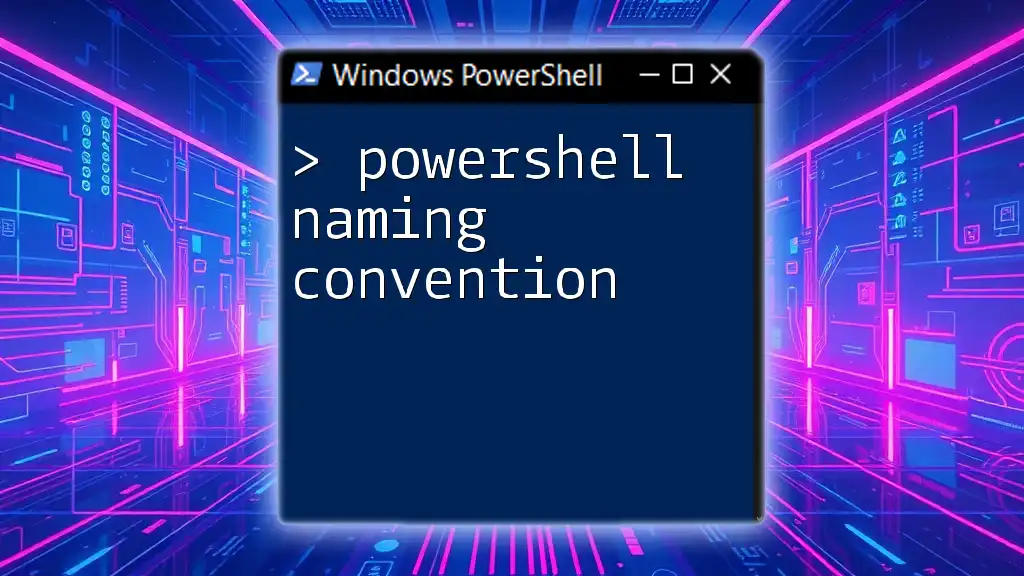
Advanced Function Calls in PowerShell
Calling Functions Within Other Functions
One powerful feature of PowerShell functions is the ability to call one function from within another. This supports the creation of complex and comprehensive scripts through nested calls.
Consider this example where we have a function to compute a square, which is then called by another function:
function Square {
param($number)
return $number * $number
}
function CalculateArea {
param($length)
return Square -number $length
}
Here, `CalculateArea` calls `Square` to compute the area, resulting in a clear and organized script structure.
Passing Functions as Parameters
PowerShell also allows you to pass functions as parameters to other functions. This dynamic capability enables further extensibility and reusability.
Here's an example:
function Execute {
param($FunctionToCall)
& $FunctionToCall -Name "Jane"
}
Execute -FunctionToCall Greet
In this case, the `Execute` function calls `Greet` using the `-FunctionToCall` parameter, resulting in the output "Hello, Jane!".

Common Mistakes When Calling Functions
Not Specifying Parameters Correctly
A common error when calling functions is not specifying parameters correctly. This could lead to unexpected results or errors. Always double-check that you’re providing the correct number and type of parameters for your functions.
Scope Issues
Scope is a critical concept in PowerShell functions. Variables defined inside a function are generally local, meaning they can't be accessed outside the function.
For example:
function Display {
$message = "This is local scope!"
return $message
}
Display
However, if you try to access `$message` outside the function, it won't exist.
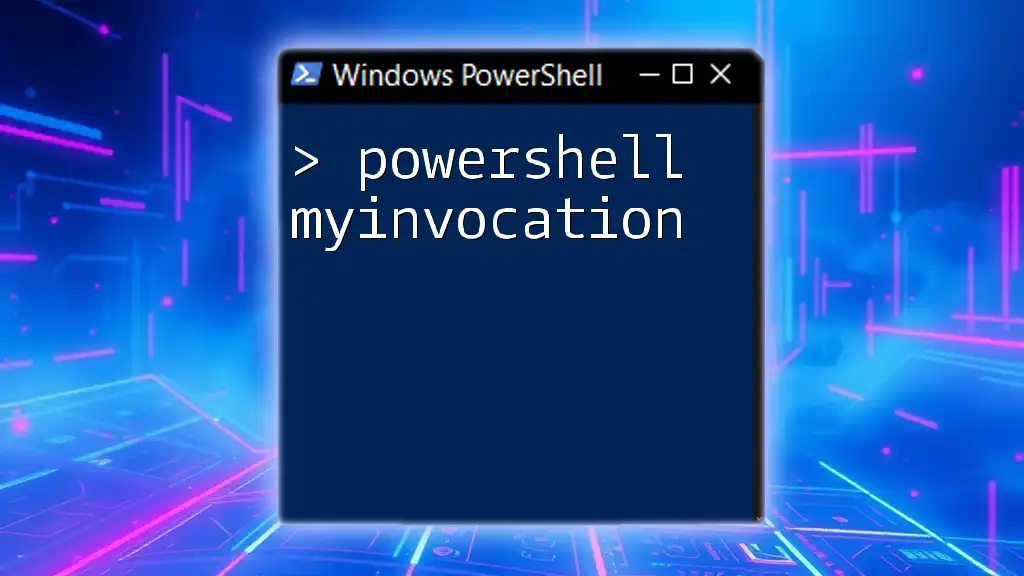
Best Practices for Function Calls in PowerShell
Naming Conventions
Use clear and descriptive function names that convey their purpose to improve readability. Names like `Get-UserDetails` or `Calculate-Total` instantly inform users of the function's utility.
Keeping Functions Concise
Strive to keep your functions concise and focused on a single task. If a function becomes too complex, consider breaking it into smaller functions to enhance maintainability.
Example of refactoring a complex function: Instead of a function that does multiple unrelated tasks, you could create individual functions for each task and call them as needed.

Conclusion
Recap of Calling Functions in PowerShell
In this guide, we've explored the essentials of PowerShell calling a function. From defining and calling basic functions to utilizing parameters, return values, and advanced usage, the versatility of functions is evident.
Encouragement for Continued Learning
As you enhance your PowerShell skills, continue to experiment with functions, explore additional PowerShell cmdlets, and dive deeper into modular scripting. The resources and communities available online can serve as significant support in your learning journey.
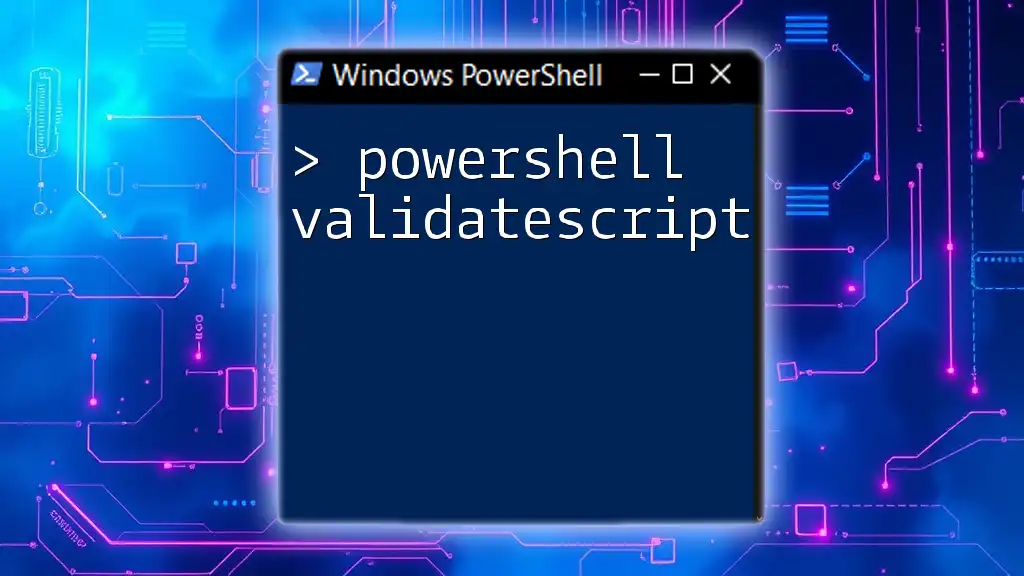
Additional Resources
For further reading and practice, look into the official PowerShell documentation and online tutorials that provide hands-on experiences and advanced scripting challenges. These tools will help solidify your understanding and mastery of PowerShell functions.

